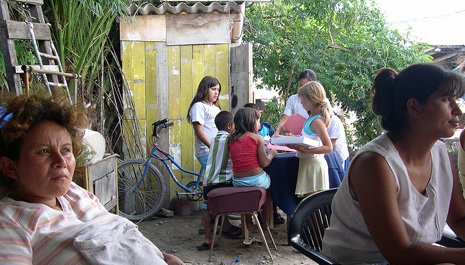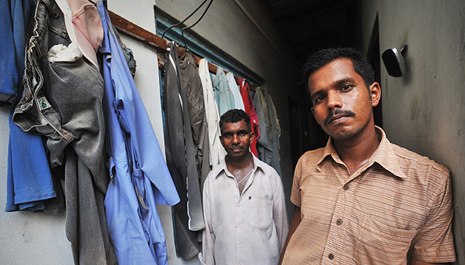Labour and Skills
(Research papers and policy briefs below)
Over 90 percent of migration today –whether for reasons of employment, family reunification, immigration, education, or due to refugee flight—is bound up in employment and economic activity outcomes. ILO calculated that 169 million of the 272 million people –including refugees – living outside their countries of birth or origin in 2019 were active migrant workers (ILO, 2021), meaning economically active – employed, self-employed or otherwise engaged in remunerative activity. Economically active/employed migrant workers in 2019 were 70.1 percent of all working age international migrants (ILO, 2021).
Nearly all the total migrant stock population of 15+ age (245 million in 2019) would be migrant workers by international convention definition: “intending to be engaged, engaged or having been engaged in remunerative activity”, including self-employment. Considering children and aged family members of working migrants means that nearly all migrants and refugees are, have been, or are intending to be engaged in work or dependent on persons who are.
In 2020 an estimated 281 million foreign-born people resided in countries other than where they were born (UNDESA, 2020). 73 per cent of international migrants worldwide were between the ages of 20 and 64 years compared to 57 percent for the total world population (UNDESA, 2020).
International migrants comprised 14 percent of the population in 2019 across all high-income countries; that proportion was significantly higher in several countries in Europe, North America, and Oceania (UNDESA, 2019).
However, the global migrant stock figures above are under-counts; many other foreign persons in temporary, short-term, or seasonal employment and/or residence situations are not counted in the UN statistics on international migrants when their sojourn is less than a year and/or if they retain residency in their home or another country. Commercial or transportation workers who have not changed their place of established residence and itinerant commercial traders, hundreds of thousands of whom retain residence in one country but circulate much of the time across numerous countries in regions such as Eastern, Southern and Western Africa are not formally counted as international migrants. However, many of these mobile workers fit the definition of international migrant worker, as do itinerant, offshore, posted and cross-border “frontalier” workers, so are concerned by this discussion.
A main concern for many countries is maintaining labour force and skills profiles needed for productive labour markets and healthy, competitive economies. Ageing work forces, expanding skills needs unmet by native schooling and supply, and declining population numbers mean more and more countries require immigrant skills and labour - not necessarily as the only solution, but certainly as an important means of addressing these challenges.
In all regions of the world, evolving technologies, industrial transformations and restructuring of work itself, along with demographic trends already pose huge challenges. Meeting these challenges requires expanding and renovating schooling, vocational training, and higher education almost everywhere; it also requires international recognition of qualifications. At the same time, the international community needs to be sensitive to issues of brain drain - the exodus of skills from developing countries to developed nations, and brain waste where qualified migrants do not secure jobs commensurate with their skills.
Migration occurs as populations age and workforces decline and even as unemployment remains high in some immigration countries. The global dichotomy is threefold: a significant proportion of unemployment is structurally inherent to jobless growth approaches by finance and industrial capital –North and South. Secondly, technological evolution results in many workers left with obsolete skills or simply without skills relevant to today's employer needs. Thirdly, education and training lag behind evolving economic and labour market needs, both in numbers and in content of training; often training and education do not address ‘youth bulges’ in population.
Measuring labour and skills demands, facilitating access to foreigners to meet demands, recognizing qualifications, and ensuring effective jobs-skills matching are fundamental contemporary challenges faced by many countries worldwide. However, much work is needed to determine effective modalities, mechanisms, regulatory measures and policy parameters to facilitate increased international skills and labour mobility. GMPA Associates are involved in a number of processes and projects working to find solutions for these e increasing challenges of today and tomorrow.
Documents and Papers
- Just published! Technical Capacity-building Manual. Admission and Post-Admission Labour Migration Policies and Tools: Guidance for main Countries of Destination in Southern Africa and the Indian Ocean region. International Labour Office, ILO, Pretoria, 2024. (184 pages) Prepared by Global Migration Policy Associates (GMPA) expert team: Piyasiri Wickramasekara, Chandima Arambepola, Patrick Taran and Olga Kadysheva.
- Jane Aeberhard-Hodges, GMPA Associate, former ILO Gender Equality Director, spoke on Human rights in the context of the 75th anniversaries of the UDHR and the Freedom of Association as a fundamental human right at CoNGO 75th Anniversary Commemoration in Geneva and the CoNGO Sixth Global Thematic Webinar: CoNGO and UDHR: Celebrating 75 Years. (15 December 2023, Geneva, Ecumenical Centre and Online on Zoom). See Speaking text and Concept note.
- Background Report for the IGAD Regional Guidelines on Rights-Based Bilateral Labour Agreements (IGAD-ILO, 2021) (EN/FR), P.Taran, P. Wickramasekara, O.Kadysheva & M. Muswede.
- IGAD Regional Guidelines on Rights-Based Bilateral Labour Agreements (IGAD, 2021), P. Wickramasekara and P. Taran.
- COVID-19, Migrants, Refugees, Mobile Workers: Global Assessment and Action Agenda. Taran & Kadysheva, 2022.
- Migrant workers and discrimination: realities, threats, and remedies. A.Gächter (2022), Revista Tecnológica - Espol
- Migration, Human Rights & Sustainable Economies: A Century 21 Agenda. P. Taran, 2022, Revista Tecnológica - Espol.
- Return and reintegration challenges and policy responses in Asia following the COVID-19 pandemic. P.Wickramasekara, ADBI – OECD – ILO, 2022.
- Newly posted ! Women migrant workers’ labour market situation in West Africa, ILO, 2020 (drafted by V. Castillo Rueda)
- COVID-19 Pandemic and Migrant Workers in Malaysia and Singapore with Special Focus on South Asian Workers. P.Wickramasekara, 2020.
- Malaysia: Review of admission and recruitment practices of Indonesian workers in the plantation and domestic work sectors and related recommendations. P.Wickramasekara, ILO, 2020.
- Accession with low compliance: Sri Lanka’s experience with the 1990 International Convention on Migrant Workers. P.Wickramasekara, 2019.
- Effective return and reintegration of migrant workers with special focus on ASEAN Member States. P.Wickramasekara, ILO, 2019.
- Core elements of a bilateral agreement or a memorandum of understanding on labour migration. P.Wickramasekara, ILO, 2018.
- Assessment guide for bilateral agreements and memoranda of understanding on labour migration with special focus on Bangladesh. P.Wickramasekara, ILO, 2018.
- Good Practices and Provisions in Multilateral and Bilateral Labour Agreements and Memoranda of Understanding. P.Wickramasekara, ILO, 2018.
- Migration, Development, Integration & Human Rights: Global Challenges in the 21st Century. Taran, 2018.
- Migration, development and governance: labour and skills mobility, international standards and comprehensive migration policy for Taiwan. Taran, 2018.
- Regional mobility, freedom of movement and integration: integral to sustainable development and governance worldwide; Contemporary political-economic challenges, contentions and responses. Taran, 2018.
- Migrant Women, Women Migrant Workers. Crucial challenges for advocacy, services and action. Taran, 2018.
- Engaging the Diaspora and Migrant Workers for Home Country Development: Diaspora Finance and Remittances. P.Wickramasekara, E.Tennant & P.Taran (2018). ADBI – OECD – ILO.
- Report of the Workshop for the development of a training and capacity building plan on the role of labour institutions and migration authorities/agencies on labour migration governance , IOM-AU-ILO, 2018
- Migrant Women, Women Migrant Workers: Crucial Challenges for Rights-based Action and Advocacy. Taran, 2016.
- Etat des Lieux des Données sur la Migration de Main d’Oeuvre en Mauritanie dans le Cadre du Programme RBSA, NIANG, 2010
- Imperatives for Union Leadership in Defending a Rights Based Approach on Migration in the Age Of Globalization, TARAN, 2006.
- Globalization, International Labour Migration and Rights of Migrant Workers, WICKRAMASEKARA, 2006.





